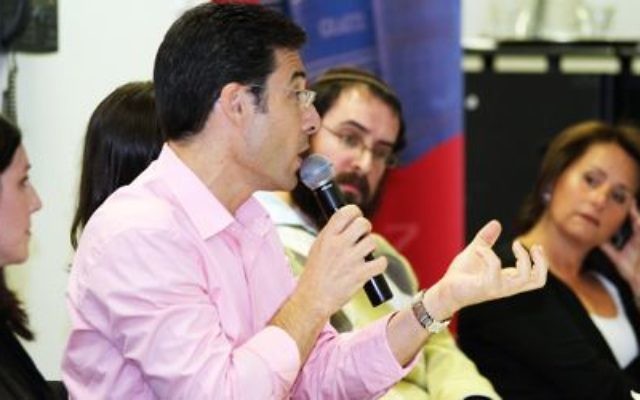Big ideas light the way to big future
IT was standing room only at a community debate on the future of Jewish Melbourne last Sunday.
IT was standing room only at a community debate on the future of Jewish Melbourne last Sunday.
Held at Monash University, the debate heard from community representatives, young people and the unaffiliated, who all had their chance to have a say on issues tied to Jewish continuity.
The event, attended by about 300 people, was organised in response to a landmark study by Professor Andrew Markus and his team at Monash’s Australian Centre for Jewish Civilisation.
Story continues after video
Continuity continues
For more videos, go to JNTV
In opening the debate, Professor Markus said data shows change was definitely occurring among Melbourne’s Jews.
And he asked: “For running our community, we have a 1970s model, but will that model work in 2020?”
The evening began with six speakers, who each posed questions to the panel. Among the questions were will increased geographic dispersion affect the Jewish community, posed by blogger Anthony Frosh.
According to Rabbi Menachem Wolf, one of the panellists, absolutely not.
High property prices in Caulfield and East St Kilda, he said, “will not kill the Jewish community”.
“We move,” the Spiritgrow rabbi said. “We’ve moved for 3000 years.”
Mother-of-three Sally Jenshell asked the panel: “Why are we trying to engage this demographic [young people] at a time when they’re experiencing freedom for the first time?”
Panellist Liam Getreu, a New Israel Fund board member, responded: “It is new organisations with new identities and multiple pathways that are going to be the future.”
Habonim Dror head Ben Scholl called for the community to redirect resources to cultural events that appeal to younger crowds.
“You can throw money at problems all you want, but if you don’t know what you want, you can’t get it,” Scholl said.
While Jewish Museum of Australia director Rebecca Forgasz called for a wider definition of engagement to include more cultural and creative outlets.
“We go wrong when we use outdated categories to define Jewishness,” she said.
Gary Samowitz, the director of Jewish Aid Australia, added that in his experience, young people looked to become involved in different ways to their parents and grandparents.
“Young Jews want to volunteer, surely we as a community should be providing more opportunities,” Samowitz said.
Much of the panel discussion was taken up by debates about the merits, value for money and legacy of Jewish education.
Mount Scopus Memorial College president Lisa Kennett explained her school was reinventing itself to respond to what young people wanted.
“Informal education is the crown jewel,” she said of the current Jewish studies philosophy.
Bialik College principal Joseph Gerassi called on Jewish schools to collaborate more with out-of-school Jewish education providers.
“There would be nothing better than to see Jewish schools working hand in hand with UJEB [United Jewish Education Board],” he said.
It was a point taken up by community strategist Leah Balter, also on the panel. “We need to be collaborative,” she said. “We need schools to share their curriculum with UJEB.”
Community activist Malki Rose said the resource focus on Jewish schools was misplaced.
“Engagement in Jewish life is not completely based on Jewish schools,” she said. “For people who are panicking about accessing Jewish schools, there are other places.”
The debate was hosted by The AJN, Monash University and Groundswell 2011.
NAOMI LEVIN
Photo: Peter Haskin
More photos in our photo gallery


comments